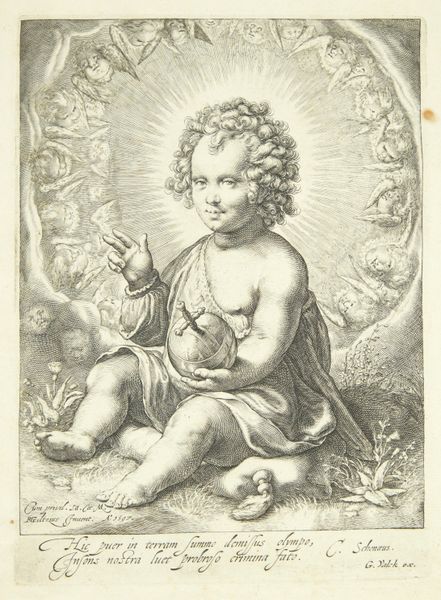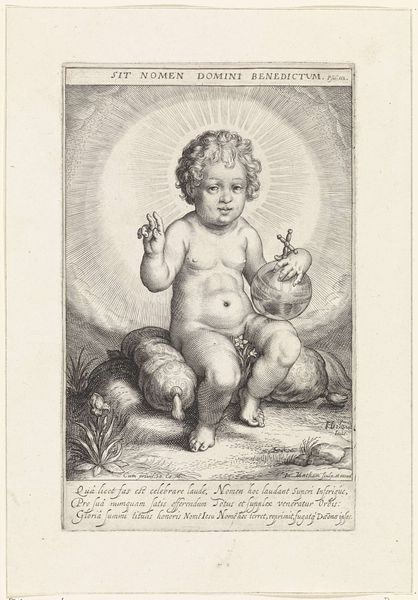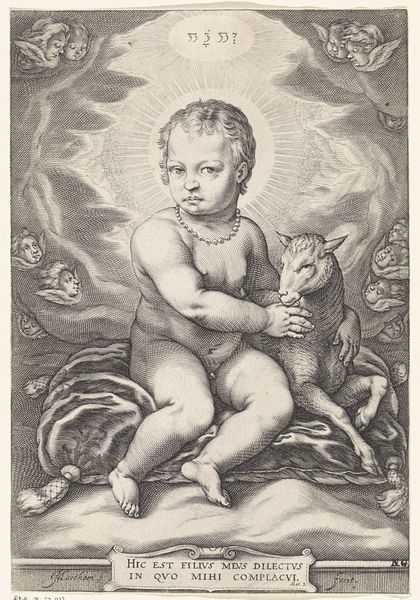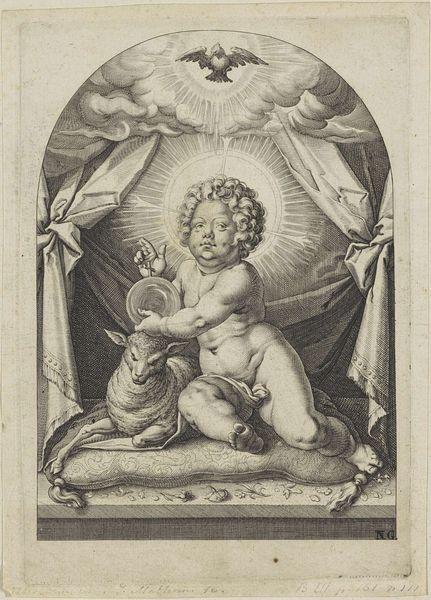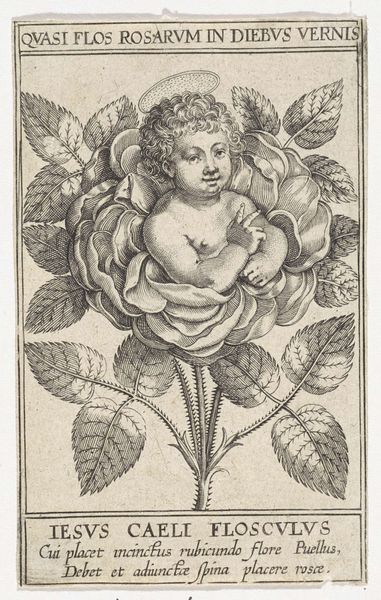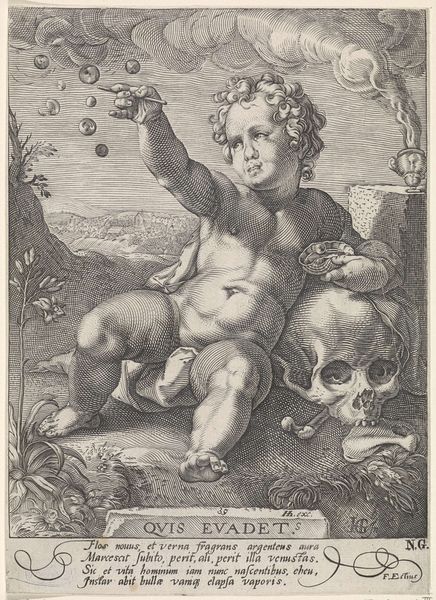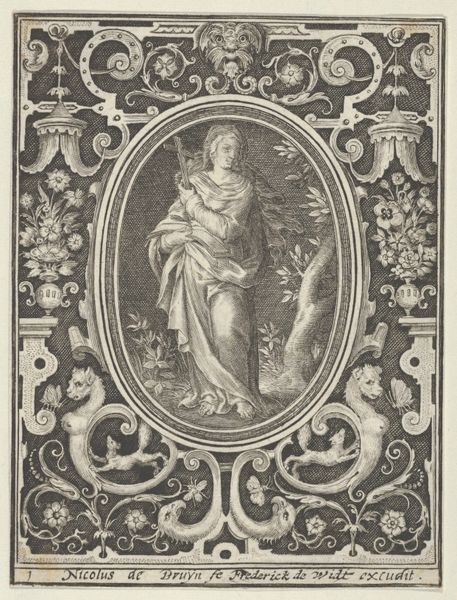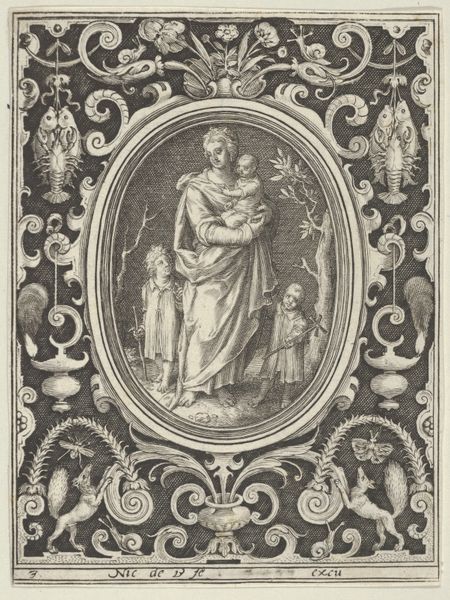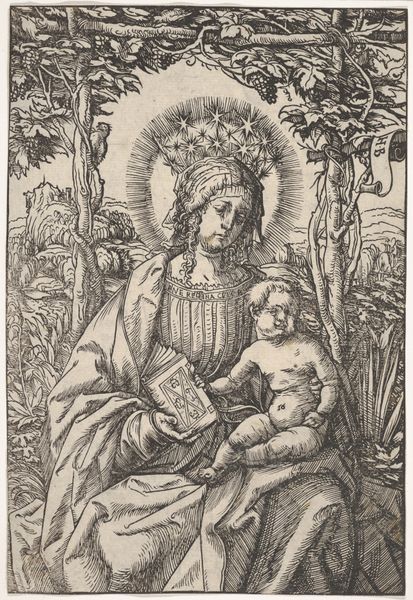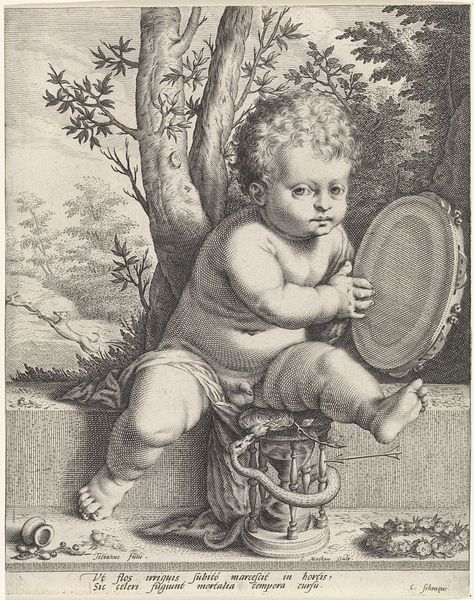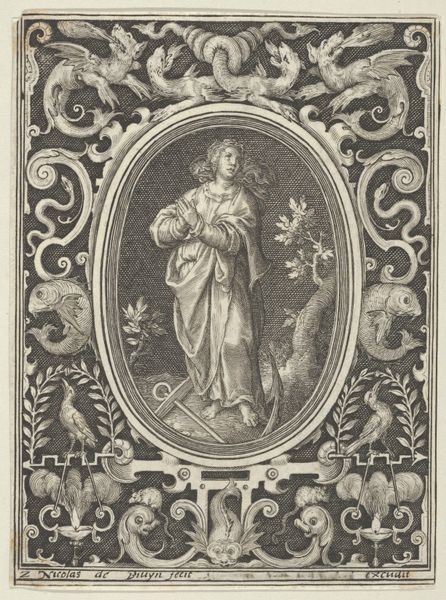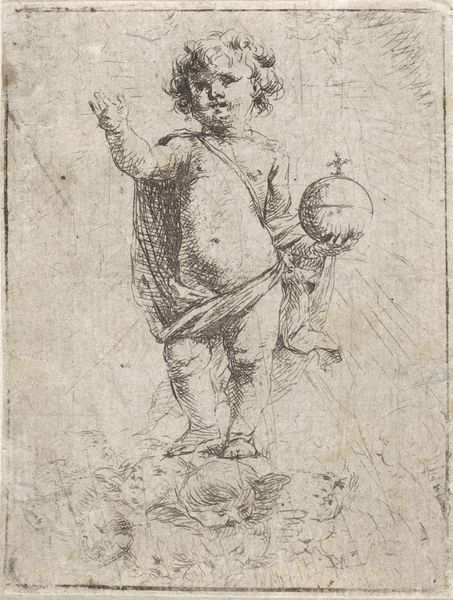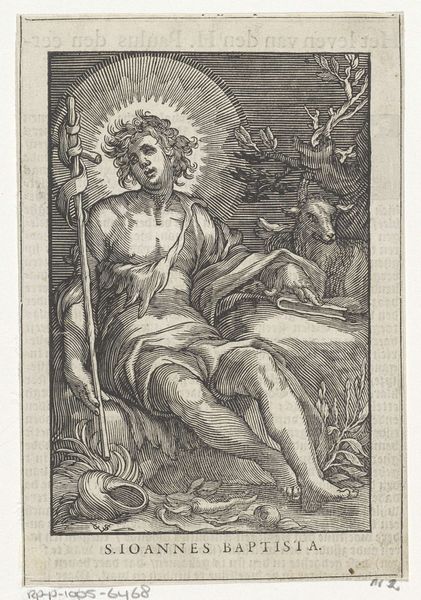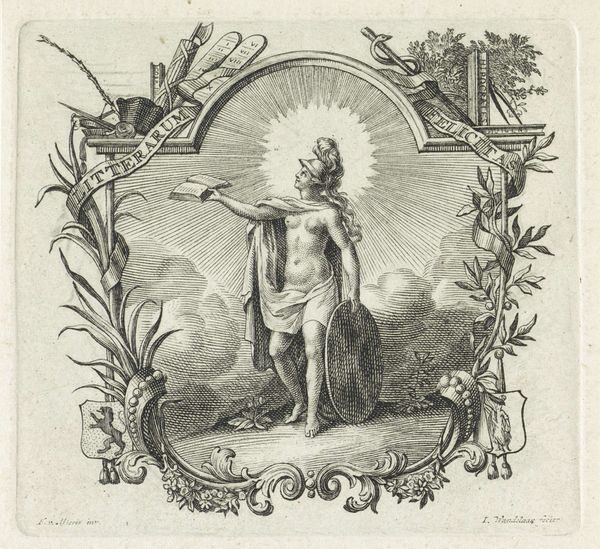
print, engraving
#
portrait
# print
#
figuration
#
11_renaissance
#
portrait drawing
#
northern-renaissance
#
engraving
Dimensions: 190 mm (height) x 138 mm (width) (bladmaal)
Jan Saenredam created this engraving, Salvator Mundi, sometime between 1589 and 1607. The image depicts the infant Christ as the “Savior of the World,” holding a globe surmounted by a cross, surrounded by cherubic figures. Saenredam worked in the Netherlands during a period of intense religious and political upheaval. The Dutch Revolt against Spanish rule and the rise of Calvinism shaped artistic production. While ostensibly a religious image, this print also subtly navigates these complex social currents. It presents a vision of divine authority but in a way that is less overtly Catholic, reflecting a changing religious landscape. The cherubs, while traditional, are rendered with a naturalism that aligns with the emerging artistic values of the time. As an art historian, to fully understand this work, I'd want to explore the dissemination of religious imagery through prints during this period. Who was the intended audience? How did prints function in shaping religious and political identities? The answers lie in the archives, libraries, and museum collections that preserve the traces of the past.
Comments
No comments
Be the first to comment and join the conversation on the ultimate creative platform.
